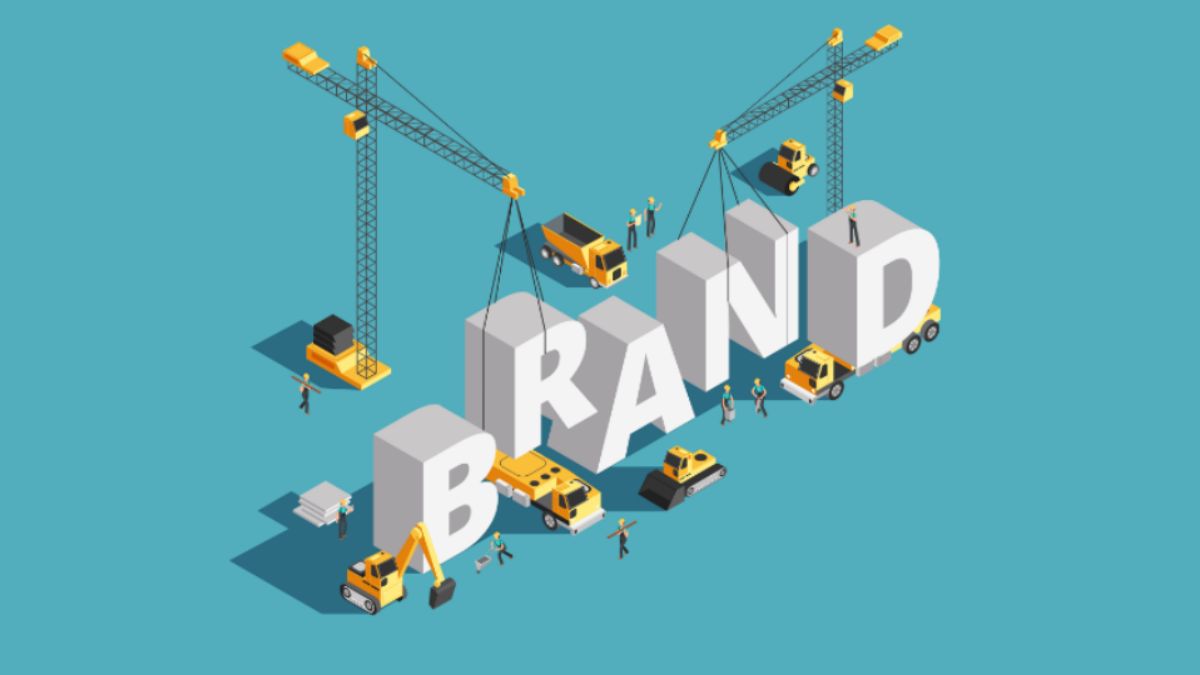BUSINESS
How to Build a Strong Brand Identity for Your Product

Understanding Brand Identity
A strong brand identity is essential for standing out in today’s competitive marketplace. It helps create a lasting impression, build trust with customers, and drive brand loyalty. A well-defined brand identity includes visual elements, messaging, values, and customer experience, all of which play a vital role in shaping public perception.
Why Brand Identity Matters
A consistent and recognizable brand identity offers several advantages:
- Differentiation: Distinguishes your product from competitors.
- Customer Trust and Loyalty: Establishes credibility and fosters long-term relationships.
- Marketing Effectiveness: Enhances brand recall and simplifies communication.
- Price Premium: Allows brands to charge higher prices due to perceived value.
- Business Growth: A well-established brand identity leads to increased customer retention and acquisition.
- Emotional Connection: A strong brand identity evokes emotions and builds deep connections with customers.
Key Elements of a Strong Brand Identity
A product marketing firm like Aventi Group can help businesses develop a robust brand identity by focusing on the following key elements:
1. Define Your Brand’s Core Values and Mission
Your brand’s mission and values form the foundation of your identity. Answer the following questions:
- What does your brand stand for?
- What problem does your product solve?
- What are your long-term goals?
- What unique value does your brand provide?
- How does your brand impact the community and industry?
2. Understand Your Target Audience
Successful branding requires deep insights into your target audience. Conduct surveys and market research to determine:
- Demographics: Age, gender, income, and location.
- Psychographics: Interests, values, and lifestyle.
- Pain Points: Common problems your product can solve.
- Customer Preferences: Preferred communication channels, purchasing behavior, and brand expectations.
3. Create a Memorable Brand Name and Logo
Your brand name and logo should be unique, relevant, and easy to remember.
- Brand Name: Should be short, catchy, and aligned with your product category.
- Logo Design: Must be visually appealing and scalable across different platforms.
- Color Palette: Should evoke the right emotions and be consistent with your industry.
- Typography: Fonts should align with your brand’s personality.
- Brand Symbols: Incorporate meaningful symbols or mascots that enhance recognition.
4. Develop a Consistent Brand Voice and Messaging
A strong brand voice ensures consistent communication across all channels.
- Tone: Should align with your brand’s personality (e.g., professional, friendly, authoritative).
- Tagline: A concise and impactful phrase that represents your brand essence.
- Messaging Framework: Includes core value propositions and key benefits of your product.
- Storytelling: Engaging content that resonates with your audience.
5. Build a Compelling Brand Story
A compelling brand story creates an emotional connection with your audience. Your story should:
- Highlight your journey, struggles, and achievements.
- Show how your product makes a difference in customers’ lives.
- Reinforce your core values and mission.
- Include testimonials and success stories.
- Leverage multimedia (videos, images, and infographics) to enhance storytelling.
6. Optimize Your Website and Digital Presence
A strong digital presence is crucial for brand recognition. Key aspects include:
- Professional Website: Should be user-friendly, visually appealing, and optimized for SEO.
- Content Marketing: Blogs, case studies, and whitepapers showcasing expertise.
- Social Media: Active engagement on relevant platforms.
- SEO Strategies: Optimize content for search engines to enhance visibility.
- Mobile Optimization: Ensure your website is mobile-friendly and responsive.
7. Leverage Influencer and Social Proof Marketing
Consumers trust recommendations from real people over brand advertisements. Consider:
- Influencer Collaborations: Partnering with industry influencers.
- Customer Testimonials: Showcasing real success stories.
- User-Generated Content: Encouraging customers to share experiences.
- Online Reviews: Engaging with customers on review platforms.
- Case Studies: Showcasing real-world examples of your brand’s impact.
8. Ensure Consistency Across All Touchpoints
Consistency reinforces your brand identity across different channels:
- Marketing Materials: Brochures, emails, advertisements, and packaging.
- Customer Service: Aligning tone and communication with brand identity.
- Employee Training: Ensuring brand-aligned interactions with customers.
- Retail Presence: Ensuring in-store branding aligns with digital presence.
- Community Engagement: Sponsorships and social initiatives that reflect brand values.
9. Monitor Brand Performance and Adapt
Regularly assess your brand’s impact using:
- Customer Feedback: Surveys and reviews.
- Brand Perception Studies: Market analysis and competitor benchmarking.
- Engagement Metrics: Website traffic, social media interactions, and sales data.
- Conversion Rates: Measuring how branding efforts contribute to sales.
- Social Listening: Monitoring brand mentions and customer sentiments online.
10. Implement a Rebranding Strategy When Needed
Sometimes, brands need a refresh to stay relevant. Signs that you may need to rebrand include:
- Market Shifts: Changes in industry trends and customer expectations.
- Outdated Brand Identity: A logo or messaging that feels outdated.
- Mergers or Acquisitions: Aligning the new business structure under one identity.
- Negative Public Perception: Rebuilding trust and improving reputation.
Previous Survey on Brand Identity Impact
A recent survey conducted by Aventi Group found that:
- 82% of consumers make purchasing decisions based on brand familiarity.
- 77% of customers say they prefer brands with consistent messaging across platforms.
- 65% of businesses experienced a 25% increase in sales after refining their brand identity.
- 89% of marketers believe that strong brand identity leads to higher customer loyalty.
- 92% of brand-consumer interactions happen online, reinforcing the need for digital branding.
Conclusion
Building a strong brand identity is a continuous process that requires strategy, creativity, and consistency. By defining core values, understanding the target audience, and maintaining consistency across all touchpoints, businesses can create a lasting impression. A product marketing firm like Aventi Group can provide expert guidance to help brands craft a compelling identity that drives success in the competitive market.
Investing in a strong brand identity is not just about aesthetics—it’s about creating meaningful connections and ensuring long-term brand equity. With the right strategies, your brand can establish trust, build customer loyalty, and drive sustained growth.
BUSINESS
How AI is reshaping search engine optimisation and what businesses must do next

Modern search is changing faster than any earlier digital shift, and many businesses find that old SEO habits no longer work. Search engines lean heavily on AI to read meaning, context, and behaviour, making the ranking process more profound and complex overall. AI does not look for keywords or tags but learns intent, predicts what a user will need, and delivers in a much more personalised manner. This means companies have to understand how AI shapes this new search journey if they want to remain visible in an online space that is becoming increasingly competitive by the day.
AI is turning search into a prediction tool
Now, AI knows what users want even before they’ve finished typing their query. Since search engines analyse patterns from millions of actions in order to make an educated guess as to what someone is looking for, businesses should create content that answers questions more than simple phrases. While traditional SEO relied on inserting terms in strategic places, AI-based search rewards clarity. Brands looking to stay visible have to think like users, not like algorithms from days of old. All this has made content that solves real problems the most robust way to reach customers in this new search environment.
AI is redefining authority and expertise
AI no longer judges authority based solely on backlinks. It examines how the knowledge is reflected in the content itself, for example, if information fits patterns of expert behaviour, whether the writer seems reliable, and so forth. Here, a business could benefit from a search engine optimisation expert, but success will still depend on the content’s authenticity and transparency. Clear benefits are evident when companies explain what they know, why it matters, and how it will serve the user. Authority now comes with honest communication, not with tricks.
AI is making user experience a ranking factor
Search engines can now track in real time how users interact with pages, including slow pages, confusing layouts, and distracting elements, which signal that people are unhappy. If too many people leave too quickly, AI knows the page failed. For this reason, businesses must think about user experience in their SEO strategy. Clean design, fast loading, and easy navigation are all ways AI can gain trust in a site. The goal is to create an experience where users naturally stay longer because they find exactly what they hope to see. Better experience directly supports better visibility in the new AI-driven search world.
AI changes the way content is evaluated
SEO used to rank content by formula-like means, such as density, tags, and structural signals. Now, AI measures the readability, usefulness, and relevance of content to real humans. If the content does not clearly solve a problem, users leave quickly, and AI learns it is not valuable. It also checks for accuracy, consistency, and tone. That means businesses have to focus on simple writing, real-life examples, and insights worth something. Content that sounds repetitive or artificially created loses impact because AI models pick up patterns that indicate low trust or low usefulness.
AI is transforming how reviews and brand image affect rankings
Currently, AI reads customer reviews, social posts, and brand conversations to understand a company’s level of trust. It interprets emotional tone and detects issues that customers might not say directly. One negative online trend might affect how AI views a brand. That is how vital reputation has become. Businesses that invest in immersive customer experiences and respond sincerely to customer feedback gain more trust from AI. That’s also why some brands rely on online reputation management services. However, real improvement still depends on honest communication and timely problem-solving across all digital channels.
AI is encouraging long-form and context-rich content
Short pages full of quick answers no longer work as well as thoughtful, meaningful content that explains ideas from different angles. AI reads full context, not scattered lines; it rewards depth, clarity, and logical flow. Businesses should write to feel complete and valuable, not to chase a short hack down the page. This includes answering related questions, providing a simple explanation, and maintaining a natural flow of content. When content reflects real understanding, AI recognises it as valuable and pushes it higher in the search results.
AI forces businesses to change almost daily
AI search isn’t stable; it changes with user behaviour. What works this month may shift next month. Therefore, companies should continually update their content to align with user needs and adapt to new patterns. In order to keep up, businesses must stay curious, be flexible, and test new ideas. The brands that grow now are the ones that keep an eye on how users behave and adjust their strategies in step. In an AI-led search system, adaptation is no longer optional; it is the bedrock of long-term visibility.
In this new landscape, businesses must build content around real problems, not keywords. They will need to study audience behaviour and remain active in shaping their digital reputation. More than anything else, AI will reward honesty, depth, and usefulness. Companies that invest in these values will find that being visible and relevant comes more easily. The future of SEO is about real understanding and value in every single piece of content. It is not about tricks or shortcuts.
BUSINESS
Getting Started with Numberlina.com: Tips and Tricks for New Users

Welcome to Numberlina.com, your new go-to platform for all things data-related! If you’ve just stumbled upon this exciting website, you’re in for a treat. Whether you’re looking to analyze numbers, create visualizations, or simply make sense of complex datasets, Numberlina.com has got you covered. As a new user, starting off can feel overwhelming with so many options and features at your disposal. But don’t worry! This guide is packed with tips and tricks that will help you navigate the site like a pro in no time. Let’s dive into what makes Numberlina.com special and how you can make the most of your experience!
What is Numberlina.com?
Numberlina.com is an innovative online platform designed to simplify data analysis and visualization. It provides users with a suite of powerful tools that cater to both beginners and seasoned professionals alike.
The site allows you to upload datasets, perform calculations, and generate insightful graphs effortlessly. With its user-friendly interface, navigating through various features becomes a breeze.
Beyond just number crunching, Numberlina.com fosters collaboration by allowing users to share their findings with others easily. You can also explore community-contributed content for inspiration or guidance.
Whether you’re working on academic projects, business reports, or personal endeavors, Numberlina.com aims to make your experience as seamless as possible while empowering you with essential analytical skills.
The Benefits of Using Numberlina.com
Using Numberlina.com unlocks a world of possibilities for users seeking convenience and efficiency. This platform is designed to simplify complex tasks, making everyday activities more manageable.
One standout benefit is its user-friendly interface. Even beginners can navigate the site with ease, allowing them to access tools quickly without any steep learning curves.
Moreover, Numberlina.com offers a wealth of resources tailored to meet diverse needs. From analytical features to customizable options, users have everything they need at their fingertips.
The community aspect cannot be overlooked either. Engaging with other users fosters collaboration and knowledge sharing, enhancing the overall experience while using the platform.
Consistent updates ensure that Numberlina.com remains relevant and progressive in meeting user demands. With new features regularly rolled out, there’s always something fresh to explore and utilize effectively.
Signing Up for an Account
Getting started on Numberlina.com is straightforward. Begin by clicking the “Sign Up” button prominently displayed on the homepage.
You’ll need to provide some basic information like your email address and create a password. Make sure your password is strong; it’s your first line of defense.
After filling in these details, check your inbox for a verification email. This step ensures that you own the provided email address and adds an extra layer of security to your account.
Once verified, simply log in using your new credentials. You’re now part of the Numberlina community!
Feel free to explore various features right away or take a moment to personalize your profile settings for an enhanced experience tailored just for you.
Navigating the Website and Its Features
Once you land on Numberlina.com, the user-friendly interface welcomes you. The clean layout makes it easy to find what you’re looking for.
Start with the main menu at the top of the page. Here, you’ll notice categories that neatly organize features and tools available. This structure saves time and keeps your searches efficient.
Explore the dashboard after logging in. It centralizes all your activities and notifications, ensuring nothing important slips through the cracks.
Don’t forget about the search bar; it’s a handy tool for quickly locating specific resources or information without endless scrolling.
As you dive deeper into each section, take advantage of interactive tutorials. They guide you step-by-step through various functionalities, making navigation even smoother.
Keep an eye out for updates as well! New features often roll out to enhance user experience further, so stay engaged with announcements on Numberlina.com.
Tips for Maximizing Your Experience on Numberlina.com
To make the most of your time on Numberlina.com, start by exploring all the features available. Dive into user tutorials and guides; they are incredibly helpful for newcomers.
Engage with the community forums. Sharing experiences or asking questions can provide insights you might not find elsewhere. You’ll also connect with like-minded individuals.
Set personalized notifications to stay updated on new content that matters to you. This way, you won’t miss out on relevant updates or discussions.
Regularly check for any featured articles or tips from experienced users. These resources can enhance your understanding and application of the site’s tools.
Don’t hesitate to experiment with different functionalities. Trying out new features often leads to discovering great ways to utilize everything Numberlina.com has to offer.
Troubleshooting Common Issues
Troubleshooting common issues on numberlina.com can be straightforward. If you find yourself unable to log in, double-check your username and password. Sometimes, a simple typo is all it takes.
If the website is slow or unresponsive, try clearing your browser’s cache. This helps eliminate any stored data that might cause glitches.
For those experiencing difficulty with features, ensure you’re using an updated browser version. Compatibility issues often stem from outdated software.
Should you encounter error messages, take note of the exact wording. A quick search on numberlina.com’s help section may lead you to solutions tailored for specific problems.
Don’t hesitate to reach out to customer support if things still aren’t working as expected. They are equipped to assist with various concerns and can provide personalized guidance when needed.
Conclusion and Future Updates to Look Out For
As you embark on your journey with Numberlina.com, it’s clear that this platform offers a wealth of opportunities to enhance your experience. The ease of navigating through its features will make it straightforward for you to engage with various tools and resources.
Looking ahead, keep an eye out for exciting updates and enhancements that the team behind Numberlina.com has planned. They are committed to continually improving user experience based on feedback and trends in technology. This means new features, better integrations, and possibly even more ways to connect with other users.
Staying engaged with their blog or newsletter can be beneficial too. Being informed about upcoming changes will enable you to utilize all the advantages Numberlina.com provides effectively.
Enjoy exploring everything this dynamic platform has to offer!
BUSINESS
When a Home Lets Go: The Strange Magic Hidden Inside Every Move

Moving is a pragmatic task: pack, transport, unpack. Behind the tape and cardboard is an experience that is much more powerful. Moving changes perception, arouses memories, and awakens the mind that is otherwise silent. A move does not merely mean a change of scene, but it is a change in personal gravity. It distorts the known, shakes off what is forgotten, and opens doors to reinvention that were not visible. This is the fascinating world inside every move, stranger and richer than most ever notice.
When walls start speaking
Homes hold stories the way trees hold rings. A worn patch on the floor, a sunny corner in the afternoon, a cupboard that always sticks, every detail remembers usage and presence. When a person begins packing to leave, the house reveals those memories all at once.
Objects move like dormant creatures coming to life. One can look at a necklace in a drawer and be reminded of a party they attended many years back. An old book brings back a lifelong forgotten. It is here that professional movers like Elate Moving tend to notice something extraordinary: people will find things in themselves that they did not even know they had lost.
The new home that rebuilds you
Entering a new home is entering a new reality. The brain, no longer familiar with the old design, suddenly becomes lost without the map. It must rebuild, even for the smallest things.
- Where does the morning light fall?
- Which corner feels calm?
- Where do keys naturally belong?
This puzzle-like stage sparks a burst of mental energy. The mind becomes sharper, more curious, more awake. Patterns shift without effort. A person who dislikes evenings may begin to enjoy slow sunsets from a new balcony.
A move is a surprisingly powerful architect of behavior. It quietly nudges people toward routines that suit their new environment, sometimes even changing how they think or feel. Strange and wonderful changes many notice during the first weeks after moving:
- Layouts and lights are little mysteries that one wants to solve.
- Old habits dissolve because the brain cannot rely on its usual autopilot
- New dreams and ideas emerge as the mind explores its new territory
This is the mind rewriting its own blueprint.
Objects that carry the pulse of the past
While sorting belongings, something special happens. Items stop behaving like simple objects; they begin acting like emotional time capsules. A chipped bowl becomes a reminder of a favorite person. The smell of the scarf is that of a past season of life. A notebook half-filled is like a promise yet to be fulfilled.
Relocation imposes decisions: what remains and what is meaningful other than price or purpose. This selection is a quiet form of self-discovery. In choosing what to bring into the new home, a person chooses what to bring into their future self.
When the new place finally breathes
One moment, some minute, insignificant, irretrievable, the new home always comes to life. It can be the first time the laughter is bounced off the walls. Perhaps it is waking up and realizing the place no longer feels unfamiliar. Or perhaps the air simply no longer feels strange.
Rituals create homes: it is important to place a plant by the window, find a place to read, and play music in every room. Space swallows up personality, rhythm, and warmth bit by bit. It begins to learn its residents the way the previous home once did.
Final say
Moving does not only mean moving the place but also moving the identity. Houses recall, set free, and reform people who dwell within them. Each step is a silent change, one that welcomes change and opens up the true priorities. When one enters a new house, it is not only about entering into a new space but also a new stage of who he/she is becoming.
-

 TOPIC1 year ago
TOPIC1 year ago7 Expert Tips For Choosing The Best Basement Renovation Companies
-

 TOPIC6 months ago
TOPIC6 months agoWhy Greece Katz Martian Has Everyone Talking in 2025
-

 BUSINESS7 months ago
BUSINESS7 months agoTop 5 Features of Sowix Online That Every User Should Know About
-

 TOPIC7 months ago
TOPIC7 months agoTop Features of BetterThisWorld .com You Need to Know About
-

 FINANCE10 months ago
FINANCE10 months agoHow TraceLoans Can Simplify Your Finances
-

 BIOGRAPHY10 months ago
BIOGRAPHY10 months agoFrom Reality Star to Business Mogul: Prince Narula Digital PayPal
-

 TOPIC12 months ago
TOPIC12 months agoWhy Large Waterproof Outdoor Rugs Are Essential for All Outdoor Spaces
-

 EDUCATION7 months ago
EDUCATION7 months agoThe Evolution of Pi123: How It Became a Must-Have Tool
